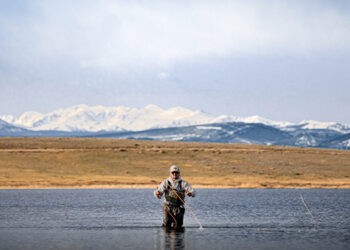Building a track and field complex, multipurpose field or sport court is a costly undertaking, but with proper initial planning and maintenance, the investment can maintain its quality and functionality for many years. Surface drainage is easily overlooked, yet a very important aspect that must be considered.
Damage to a track, field or sport court is often caused by standing water or “ponding,” particularly in colder climates where the water can freeze, wreaking havoc on an expensive track surface. Add water run-off from the surrounding areas that bring debris and pollutants, and the rate of surface deterioration increases. A track left with standing water over time causes major damage to the surface, delaminating the synthetic surface and asphalt base and severely shortening its usable life.
Surface drainage helps to quickly eliminate water from designated playing areas such as football fields and tracks, allowing for safer playing conditions and a prolonged life for synthetic playing surfaces. With today’s synthetic fields and urethane tracks, natural elements such as water can shorten the lifespan of the playing areas, leading to a costly replacement of the surface.
Often, heavy rain can cause flooding on a field or track, which may cause events to be postponed or canceled. A proper drainage system not only increases the chances of holding the event that day, but also eliminates the dangers of standing water to the playing surface.
Finally, wet tracks and fields can be a danger to athletes, even if the conditions are deemed acceptable for playing. Properly drained surfaces drastically reduce the chance of injury caused by wet conditions or standing water.
There are generally two options when talking about surface drainage: area drainage or trench drainage. Area drainage is the use of multiple catch basins placed in specific points to allow water to flow into them. There are several problems when talking about area or point drainage, specifically when dealing with athletic playing fields and track surfaces. Area drainage requires the construction of multiple, uneven surfaces that can be potentially harmful to athletes, as well as have an unattractive, undulating appearance.
Area drains, although cheaper, increase the construction time and require more costly ground excavation due to the underground pipe depth needed. These underground pipes are more prone to blockage, and can cause water backup and flooding on the playing surfaces.
The other option is to use trench drainage. Trench drainage is simply the use of linear trenches of specified width and depth to catch and remove water. Trench drains have very simple levels and falls to construct which give the area a safer, flatter surface that is ideal for athletic playing surfaces. In addition, the drains have a neat, linear appearance that can act as a border between the playing field and track. Trench drains are also much easier to install due to the shallow excavation and grading and minimal underground piping, which decreases the chances of blockage.
Jaclyn Revis is the marketing services manager for ACO Polymer Products, Inc., a leader in the design and manufacturing of ACO Sport polymer concrete trench drainage for athletic facilities and other applications. For more information she can be reached at 888.710.1006. or email info@acousa.com.










